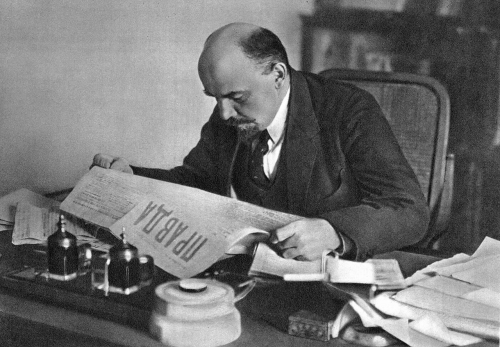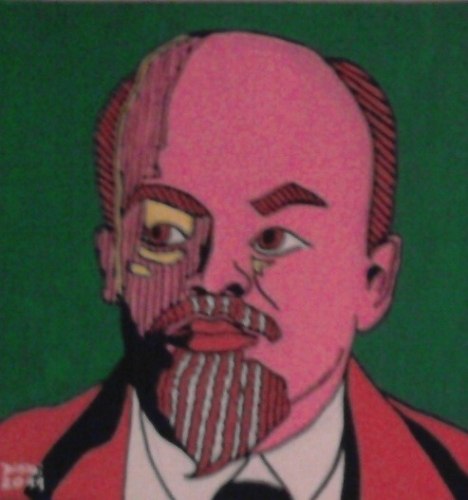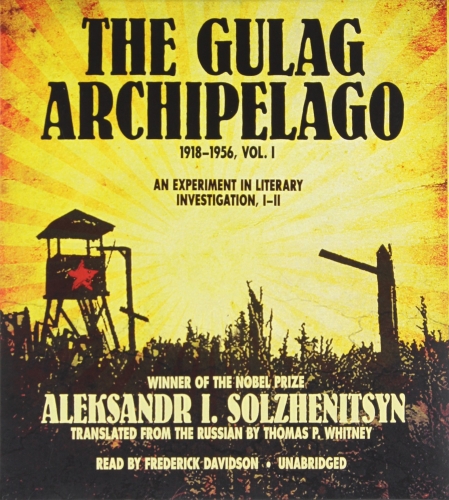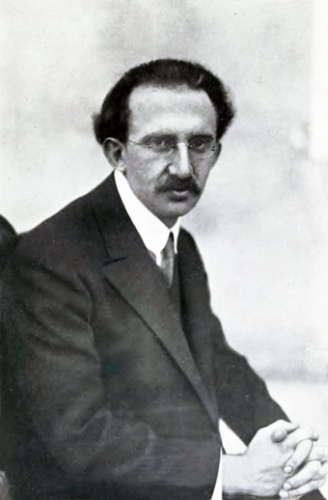vendredi, 04 décembre 2020
Revolution as Profession

Revolution as Profession
When the historian Ernst Nolte formulated the thesis that Auschwitz was “the fear-induced reaction to the extermination processes of the Russian Revolution,” he was finished in the academic world. It was even of no help to him emphasizing that the copy was more irrational, more appalling and atrocious than the original. He was not forgiven the comparison since he seemed to call into question the singularity thesis, the incomparability of NS terror. That fit the taboo on totalitarianism theory. Right-wing and left-wing terror should not be mentioned in the same breath; National Socialism and International Socialism are not to be compared. And therefore all attempts to similarly work through the reign of terror by the Communists in its broad impact, as has been done with that of the Nazis, have been in vain. Of course, one would have to differentiate here. French intellectuals have undoubtedly been affected by the shocking reports by Koestler and Solzhenitsyn about the Moscow Trials and the Gulag. That was, at best, embarrassing for the German left. And so it should be no surprise that it celebrated Lenin’s 150th birthday—though under coronavirus conditions.
Lenin was the star of the Bolsheviks, who understood themselves to be the Jacobins of the twentieth century. He was undoubtedly an exceptionally gifted demagogue, but one should not imagine the Russian Revolution as resulting from a social movement; it was a project of intellectuals. The Bolshevik vanguard consisted of theorists, frequently emigrants, who had learned from Marx to use Hegel’s dialectic as a weapon. In this respect, the neo-Marxist bible History and Class Consciousness (1923) by Georg Lukács is still today unsurpassed. Here Hegel’s adroit dictum “all the worse for the facts” is taken seriously: more real than the facts is the totality as it presents itself from the standpoint of the proletarian class. In this way, dialectics becomes opium for the intellectuals.
 Like the French Revolution, the Russian is also marked by an alliance of philosophy with fanatical enthusiasm. And this fanaticism of the Lenin cult has found its intellectual fans up into the present—one thinks of the hypersensitive aesthetician Walter Benjamin, of the communist model poet Bert Brecht, of the philosopher Jean-Paul Sartre, then the student movement of ’68 and the present-day left. We owe the most extreme formulation of the cult to Ernst Bloch: “Ubi Lenin, ibi Jerusalem,” where Lenin is, there is salvation, the kingdom of freedom and eternal childhood in God. Ernst Nolte was thus right when he characterized Marxism as “the last faith in Europe.” And this faith was “organized” by Lenin.
Like the French Revolution, the Russian is also marked by an alliance of philosophy with fanatical enthusiasm. And this fanaticism of the Lenin cult has found its intellectual fans up into the present—one thinks of the hypersensitive aesthetician Walter Benjamin, of the communist model poet Bert Brecht, of the philosopher Jean-Paul Sartre, then the student movement of ’68 and the present-day left. We owe the most extreme formulation of the cult to Ernst Bloch: “Ubi Lenin, ibi Jerusalem,” where Lenin is, there is salvation, the kingdom of freedom and eternal childhood in God. Ernst Nolte was thus right when he characterized Marxism as “the last faith in Europe.” And this faith was “organized” by Lenin.
The central Leninist dogma was that of the actuality of revolution; it was on the agenda. The suggestive project formula was: “electrification plus soviets.” The revolutionary project was thus constructed like an ellipse around two focal points, the industrialization of agrarian Russia and secondly radical democracy: “All power to the councils.” However, a Soviet Union in the literal sense never quite existed. The Soviet myth was never anything other than opium for the people. For Lenin had designs all along on a dictatorship of the party. It owes its vanguardist self-image as the embodiment of proletarian class consciousness to strict organization and sharp selection. It not only claims to make the proletarians conscious of their true interests, but claims, as well, to be the leader of all the oppressed. With this noble claim, an elite cadre party legitimizes its totalitarian rule. Thus characteristic of the Russian Revolution was not the spontaneity of the masses but authoritarian leadership. From the outset, the dictatorship of the proletariat was a dictatorship of the bureaucracy. The Bolshevist elite had the utmost mistrust of the chaotic people, who were to be transformed into an alliance of the oppressed, organized by fanatical intellectuals. And for this reason we can say today: Lenin is current in a baleful sense, as long as the thought of a revolutionary dictatorship lives on—as long as there are parties that understand themselves as the embodiment of the truth and abuse the state as a weapon.
Revolutionary vanguard, Bolshevist elite, cadre party—what inspires these concepts is the notion of revolution as a profession. In his pamphlet “What Is to Be Done?” from the year 1902, Lenin also presents us with the figure of the professional revolutionary. His living existence is party work. Lukács’s Lenin apology went on to further elaborate the theoretical ideal of the sacrificial professional revolutionary in the interest of humanity. As a fanatical Jacobin, he enters the stage of world history for the first time. Yet has one really to imagine the professional revolutionary as an engaged, ascetic fighter? Hannah Arendt drew an entirely different picture: “His time is essentially filled with study and contemplation, with theories and discussions, and of course with reading newspapers, and the sole object of all these purely mental activities is the study of revolutions. The history of the professional revolutionary in the nineteenth and twentieth centuries belongs in truth neither to the history of the working nor the owning classes, but surely to the as yet unwritten history of productive idleness.” What drives the professional revolutionary is therefore not the suffering of the oppressed, but the bohemians’ hatred for the bourgeoisie. The profession of revolution is held by those who have no profession and who stylize, as an aesthetic-political posture, their ressentiment against achievement.

One could speak of a birth of Red Terror from the spirit of dialectical philosophy—of a transition of the bohemian attitude into “merciless mass terror.” Lenin demonstrated that the absolute terror of Jacobin rule could be exceeded, namely, by the radical destruction of the bourgeoisie. Here Marxist class struggle assumes the character of an absolute antagonism. The struggle against the class enemy escalates to a war against monsters. Thus Lenin preached civil war and the necessity of violence. This makes him to the present day one of the most important theoreticians of partisan struggle and guerrilla warfare. For Lenin, an avid reader of Clausewitz, not only war but above all civil war marked the continuation of politics. In this way, even the completely non-Marxist Russian Sonderweg to communism could be justified. Class warfare came to replace for him the crisis of capitalist society. He construed World War I as the result of capitalist collapse and as a historical sign of world revolution.
Anyone who did not share the red belief in the actuality of revolution already came to feel the horror of totalitarian rule in Lenin’s time. There were camps for regime opponents, pogroms against religious believers, and concentration camps for the class enemy. Anyone who opposed the Bolshevist elite was considered a criminal, strikes were considered treason, and every critic was treated as an enemy. That expressions of free speech were prohibited was then self-evident. Stalin only had to systemize this. In the course of the Great Purge, the “enemy of the people” gradually replaced the class enemy. And enemies of the people could indeed also be found within one’s own ranks; they all disappeared in the Gulag. And there, “counter-revolutionaries” were treated even more cruelly than criminals. In 1949 Arthur Koestler, who was himself from 1931 to 1937 a member of the CP, could write in summary: “It is a fact that Stalinism has transformed itself into a movement of the most extreme right over the course of the last 20 years, in accord with established criteria: chauvinism, expansionism elevated to the extreme, a police regime without habeas corpus, monopolization of the means of production by a corrupt hereditary oligarchy, oppression of the masses, elimination of all opposition, abolition of civil and individual rights.” In plain words: with the Great Purge, the red terror culminates in right-wing extremism. A clearer confirmation of totalitarianism theory is not even conceivable. Mussolini and Lenin, Hitler and Stalin were ideological doubles.

Hardly any other book has more strongly altered the European view of the Soviet Union than The Gulag Archipelago by Solzhenitsyn. Through its countless witness testimonies, it has the distinction of being authentic. But one can best gain an impression of the Leninist-Stalinist system by reading Koestler’s Darkness at Noon and Orwell’s 1984. For at issue is not only physical but also psychological cruelty of unimaginable dimensions. What is meant here are show trials, confessions of guilt extracted under torture, and self-incriminations preceded by thorough brainwashing.
We in Germany know show trials primarily through the film footage documenting how in the early 1940s Roland Freisler, president of the People’s Court of Justice, handed down death sentences that had already been determined. These trials were aggressive humiliations in which the defendants were granted no right to a defense. The prototype of such trials was established by the Moscow Trials from 1936 to 1938, in the course of which nearly the entire leadership of the October Revolution was liquidated. One did not shrink from torture to produce “confessions of guilt.” Like Leon Feuchtwanger, Ernst Bloch was also among the intellectuals who justified these Moscow show trials. But the liquidation of the “enemies of the people” did not suffice those in power. The memory of the “non-persons” was also to be wiped out. Several retouched photos of Lenin and Stalin became famous precisely because of this.
 The self-incriminations before the tribunals, which were not forced by torture, but also those in numerous writings of communist intellectuals, belong to the great moral scandals of history. One understands them better when one sees how Bolshevism abrogated the moral verities of bourgeois society. Lukács spoke of a “second ethics” that would forcibly and cruelly create clarity in the confused world of the humane. The terrorist is the Gnostic of the deed, who takes crime upon himself as a necessity in the struggle against capitalism. Lukács dedicated his essay “Tactics and Ethics” to the young generation of the Communist Party: the terrorist as hero sacrifices his ego on the altar of the idea that presents itself as an order issued from the world historical situation. And in a letter to Paul Ernst from May 4, 1915, one reads about the revolutionary: “Here—to save the soul—the soul itself must be sacrificed: one must, out of a mystical ethics, become a cruel political realist.” Such is in keeping with the syndrome that Manès Sperber called treason out of loyalty, that is, denial of one’s own standards and convictions, intellectual masochism, and obsequious ingratiation with the “working class.”
The self-incriminations before the tribunals, which were not forced by torture, but also those in numerous writings of communist intellectuals, belong to the great moral scandals of history. One understands them better when one sees how Bolshevism abrogated the moral verities of bourgeois society. Lukács spoke of a “second ethics” that would forcibly and cruelly create clarity in the confused world of the humane. The terrorist is the Gnostic of the deed, who takes crime upon himself as a necessity in the struggle against capitalism. Lukács dedicated his essay “Tactics and Ethics” to the young generation of the Communist Party: the terrorist as hero sacrifices his ego on the altar of the idea that presents itself as an order issued from the world historical situation. And in a letter to Paul Ernst from May 4, 1915, one reads about the revolutionary: “Here—to save the soul—the soul itself must be sacrificed: one must, out of a mystical ethics, become a cruel political realist.” Such is in keeping with the syndrome that Manès Sperber called treason out of loyalty, that is, denial of one’s own standards and convictions, intellectual masochism, and obsequious ingratiation with the “working class.”
So this is the real answer to the question “What is to be done?” Even if Stalin and Mao then surpassed him—Lenin set standards in revolutionary inhumanity. He stood against everything that state policy in the modern era was supposed to accomplish until now: namely, to prevent civil war, to bracket war, and to still see in the enemy human beings. For Lenin, good was everything that demolished bourgeois society. Whoever celebrates him is therefore either ignorant or malicious. One should treat Lenin’s birthday with the same tabooed reticence as April 20th.
00:37 Publié dans Théorie politique | Lien permanent | Commentaires (0) | Tags : théorie politique, révolution, révolutionnaires, lénine, léninisme, communisme |  |
|  del.icio.us |
del.icio.us |  |
|  Digg |
Digg | ![]() Facebook
Facebook


